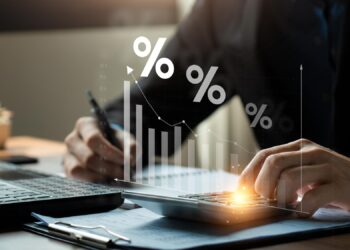Underperformance of sustainable indices has been a trend change
Even though severe geopolitical tensions, spiking inflation and recession fears have hurt global equity markets as a whole, the underperformance of sustainability indices has clearly been a trend change compared to previous years. Market segments that have performed well, most notably fossil fuels, tobacco and defence, are commonly excluded by ESG investors, which probably explains a large part of today’s sustainability underperformance.
Recent weaker sustainability performance has without question once again sparked the debate around whether ‘doing good’ equals ‘losing money’, implying there is a natural trade-off between the two. Ideally, we want to create both wealth and wellbeing, but obviously sustainability strategies sometimes have competing priorities. Examples include climate concerns versus the social costs of high energy prices, or investing in defence companies during geopolitical turmoil.
The world does look different now
It is also clear that coming out of the COVID pandemic and with a war waging on the European continent, the world does look different this time — one in which sustainable investing has to evolve as well to better navigate increased market volatility.
As such, we could argue that sustainable investing is experiencing at least a ‘healthy’ reset in which mainstream assumptions about, for example, the effectiveness of strict exclusions but also ESG ratings are challenged. More sophisticated, practical approaches that apply more nuance and context will likely see increased market appetite.
The recent dwindling market appetite for sustainable investing clearly shows in strategy flows too. While sustainability has been the standout story of strategy flows in recent years, that trend has arguably weakened in recent months. For example, inflows into ESG strategies stood at US$13 billion in May 2022, which is an over 70 per cent decline compared to the US$46 billion from a year ago.
So where to go from here? Given that ESG has different colours and flavours, sustainable investing, too, is not defined in one particular way. In practice, asset owners and investors can choose the sustainability strategy most suitable to reaching their specific objectives, whether that is more impact-oriented, best-in-class ESG, exclusion-based, or more mainstream ESG integration, to name just a few. And even within each of those categories, there’s often room to manoeuvre in which sustainability objectives do not necessarily have to bite investment returns. The question is how?
A barbell approach
In today’s market environment, fund managers’ fear of misaligned exposure and, conversely, desire to mitigate volatility from crowded ESG positions is high. As such, a better balance between growth and value is required. To that end, we favour an approach of owning quality companies at a reasonable price on one hand and value exposure on the other hand as an inflation hedge. In other words, owning quality businesses underpinned by strong sustainability strategies, while getting exposure to ESG improvers on the value end of the spectrum, gives flexibility whereby sustainability is not necessarily ‘sacrificing’ returns, or vice versa.
In the context of sustainable investing, such a barbell approach is often referred to as “ESG integration”, meaning sustainability that directly impacts the valuation of a company, i.e., by altering its growth outlook, profitability, risk profile or overall competitive positioning. In practice this means the strategy not only looks for high-positive impact companies, but also invests in companies that are riskier as far as ESG is concerned — as long as this is also reflected in the financial model and thoroughly addressed with company management through engagement.
Overall, every market environment brings new opportunities, including for sustainability investors. Within the wide range of sustainability strategies, clearly, some are more constrained than others, feeling the pain from sector exclusions and factor exposures that until recently, helped drive performance. Therefore, it becomes increasingly important to move sustainability beyond the stage of being a nice narrative alone and also stay valuation-disciplined by not overpaying for ‘good’ companies.
The market appetite for sustainable investing will not suddenly disappear. Despite seeing strong inflows for many years, still only a few percent of global assets under management are classified as ESG4, a number poised to go up over time given structural societal and regulatory support for sustainable investments. Examples of the latter include the EU Taxonomy, a framework targeting environmentally sustainable activities, but also the EU’s more recent initiative to draft a Social Taxonomy, both of which are meant to re-direct and accelerate capital flows towards sustainable strategies. In short, despite weakening sentiment as of late, the structural underpinnings for sustainable investing still seem very much intact.
Today’s market environment, however, has taught us an important lesson: change is a constant. There is no free lunch — also sustainable investing has to advance to the next stage in its life cycle. Changing market dynamics demand a move away from simplistic, superficial sustainable approaches towards ones incorporating more forward-looking, nuanced insights and more thoughtful engagements. Ultimately, this should not only effect positive change with companies, but also make sustainable strategies more robust in navigating different, more complex market environments.
Chris Berkouwer, portfolio manager, Robeco







